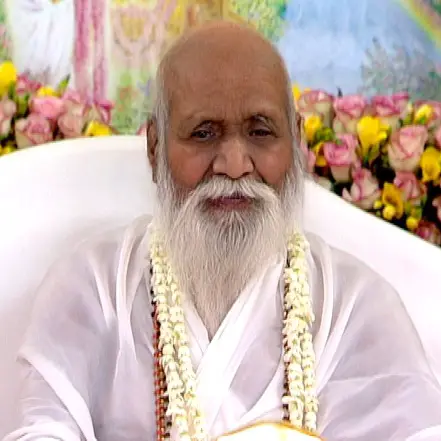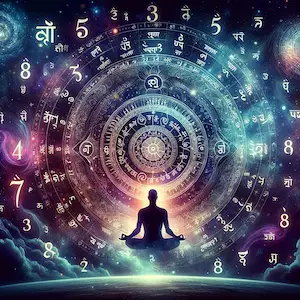Mantras have been used for centuries as a way to connect with the divine, cultivate inner peace, and achieve mental clarity. These sacred sounds or phrases hold powerful vibrational frequencies that can alter our state of consciousness and aid in our spiritual journey. But did you know that mantras can also help you find peace and tranquility in your everyday life?

Table of Contents
The Benefits of Peaceful Mantras
Chanting peaceful mantras can not only quiet the mind and reduce stress, but also promote positive energy, improve focus, and instill a sense of harmony within ourselves and the world around us. With the myriad of distractions and stressors in today’s fast-paced world, incorporating these calming mantras into your daily routine can make a significant difference in your overall well-being.
Reducing Stress and Anxiety
By focusing on positive, calming affirmations, you can reduce the impact of stress and anxiety on your body and mind. This can lead to a more relaxed, centered state of being.
Improving Focus and Concentration
When you repeat a personal peaceful mantra, you’re giving your mind a specific task to focus on. This can help you tune out distractions and stay more focused and productive.
Increasing Self Awareness and Mindfulness
By paying attention to your thoughts and emotions as you repeat your personal peaceful mantra, you can become more aware of your mental and emotional state. This can help you identify patterns and triggers that cause stress and anxiety, and develop strategies for managing them.
Cultivating a Sense of Gratitude and Compassion
Many personal peaceful mantras focus on gratitude, compassion, and other positive emotions. By repeating these affirmations, you can cultivate a more positive, open-hearted mindset and improve your relationships with others.
10 Best Peaceful Mantras
Om Shanti Shanti Shanti
Meaning and significance
Om Shanti Shanti Shanti is a mantra that invokes peace on three levels: personal, interpersonal, and universal. “Om” is the primordial sound of the universe, while “Shanti” means peace in Sanskrit. By chanting this mantra, you are asking for peace within yourself, peace within your relationships, and peace throughout the world.
How to chant
To chant Om Shanti Shanti Shanti, find a comfortable and quiet space, sit in a relaxed position, and take a few deep breaths. Begin by chanting “Om” and then follow with “Shanti” three times, focusing on each level of peace as you do so. Repeat this mantra for several minutes, allowing the vibrations to soothe your mind and fill your surroundings with tranquility.
Lokah Samastah Sukhino Bhavantu
Meaning and significance
This Sanskrit mantra translates to “May all beings everywhere be happy and free, and may the thoughts, words, and actions of my own life contribute to that happiness and freedom for all.” By chanting this mantra, you are expressing your desire for universal happiness, compassion, and well-being.
How to chant
To chant Lokah Samastah Sukhino Bhavantu, sit comfortably with a straight spine and closed eyes. Take a few deep breaths to center yourself, then repeat the mantra softly or mentally, allowing your intentions of happiness and freedom for all beings to permeate your entire being. Continue for several minutes, or as long as you feel comfortable.
Om Mani Padme Hum
Meaning and significance
Om Mani Padme Hum is a powerful Tibetan Buddhist mantra that invokes the blessings of Avalokiteshvara, the bodhisattva of compassion. The mantra translates roughly to “Praise to the jewel in the lotus,” symbolizing the transformative power of compassion and wisdom to purify the heart and mind.
How to chant
To chant Om Mani Padme Hum, find a quiet space and sit in a comfortable position. Close your eyes and take a few deep breaths to center yourself. Begin chanting the mantra, focusing on the sound and the intention to cultivate compassion and wisdom within yourself and the world around you. You can chant this mantra aloud, silently, or even while using a mala to count repetitions.
Om Namah Shivaya
Meaning and significance
Om Namah Shivaya is a revered Hindu mantra dedicated to Lord Shiva, the destroyer and transformer. This mantra translates to “I bow to Shiva,” and is a powerful way to connect with the divine energy that exists within and around us, promoting self-realization, inner strength, and transformation.
How to chant
To chant Om Namah Shivaya, sit comfortably with your spine straight and eyes closed. Take a few deep breaths to center yourself, then begin chanting the mantra slowly and clearly, focusing on the meaning behind the words. As you chant, visualize yourself bowing to the divine energy within you, inviting transformation and inner strength into your life. Continue for several minutes, or as long as you feel comfortable.
So Hum
Meaning and significance
So Hum is a simple yet profound mantra that means “I am That” in Sanskrit. This mantra reminds us of our true nature and the interconnectedness of all things. By chanting So Hum, we are affirming our connection to the universe and embracing our divine essence.
How to chant
To chant So Hum, sit comfortably with your eyes closed and take a few deep breaths to center yourself. As you inhale, silently say “So” in your mind, and as you exhale, say “Hum.” Continue to synchronize the mantra with your breath, allowing the sound and meaning to guide your meditation. Practice for several minutes, or as long as you feel comfortable.
Gayatri Mantra
Meaning and significance
The Gayatri Mantra is an ancient Vedic mantra that invokes the universal energy of the sun, symbolizing spiritual awakening and enlightenment. The mantra translates to
“May we meditate on the glorious splendor of the divine sun; may it illuminate our minds.” By chanting the Gayatri Mantra, we are asking for guidance and wisdom to help us on our spiritual journey.
How to chant
To chant the Gayatri Mantra, sit in a comfortable position with your eyes closed and take a few deep breaths to center yourself. Begin by chanting the mantra slowly and clearly, focusing on the intention to invite spiritual awakening and enlightenment into your life. You can chant this mantra aloud or silently, repeating it for several minutes or as long as you feel comfortable.
Hare Krishna Mantra
Meaning and significance
The Hare Krishna Mantra, also known as the Maha Mantra, is a sacred chant in the Vaishnavism tradition that praises Lord Krishna and His eternal energy. The mantra translates to “O Lord, O energy of the Lord, please engage me in Your loving service.” Chanting this mantra helps to purify the heart and mind, promoting devotion and spiritual growth.
How to chant
To chant the Hare Krishna Mantra, sit comfortably with your spine straight and eyes closed. Take a few deep breaths to center yourself, then begin chanting the mantra: “Hare Krishna, Hare Krishna, Krishna Krishna, Hare Hare, Hare Rama, Hare Rama, Rama Rama, Hare Hare.” As you chant, focus on the meaning behind the words and the intention to cultivate devotion and spiritual growth. Continue for several minutes, or as long as you feel comfortable.
Om Asato Ma Sadgamaya
Meaning and significance
Om Asato Ma Sadgamaya is an ancient Hindu mantra that seeks guidance from the universe to lead us from untruth to truth, darkness to light, and death to immortality. This mantra serves as a powerful reminder of our spiritual journey and the importance of seeking truth and wisdom in our lives.
How to chant
To chant Om Asato Ma Sadgamaya, sit comfortably with your spine straight and eyes closed. Take a few deep breaths to center yourself, then begin chanting the mantra slowly and clearly, focusing on the intention to embrace truth, wisdom, and spiritual growth. Continue for several minutes, or as long as you feel comfortable.
Om Namo Bhagavate Vasudevaya
Meaning and significance
Om Namo Bhagavate Vasudevaya is a revered mantra in Hinduism that praises Lord Vishnu, the preserver and protector of the universe. This mantra translates to “I bow to Lord Vishnu” and is a powerful way to connect with the divine energy and seek guidance, protection, and spiritual growth.
How to chant
To chant Om Namo Bhagavate Vasudevaya, sit comfortably with your spine straight and eyes closed. Take a few deep breaths to center yourself, then begin chanting the mantra slowly and clearly, focusing on the meaning behind the words and the intention to cultivate spiritual growth and divine protection. Continue for several minutes, or as long as you feel comfortable.
Om Tare Tuttare Ture Soha
Meaning and significance
Om Tare Tuttare Ture Soha is a Tibetan Buddhist mantra dedicated to the goddess Tara, the embodiment of compassion and protection. This mantra invokes Tara’s blessings to remove obstacles, fears, and suffering, ultimately leading us to enlightenment.
How to chant
To chant Om Tare Tuttare Ture Soha, sit comfortably with your spine straight and eyes closed. Take a few deep breaths to center yourself, then begin chanting the mantra slowly and clearly, focusing on the intention to invoke compassion, protection, and spiritual growth. You can chant this mantra aloud or silently, repeating it for several minutes or as long as you feel comfortable.
10 Personal Peaceful Mantras
A personal peaceful mantra is a simple phrase or word that you can repeat to yourself during meditation or throughout your day to help you stay centered and focused. By repeating these affirmations, you can create a sense of inner calm and serenity, even in the midst of chaos and stress.
1. “I am calm, centered, and peaceful.”
This simple mantra can help you cultivate a sense of calmness and serenity, no matter what’s going on around you.
2. “I release all negative thoughts and emotions.”
Use this mantra to let go of negative thoughts and emotions that may be weighing you down.
3. “I am filled with love, joy, and gratitude.”
By focusing on positive emotions like love, joy, and gratitude, you can cultivate a more positive, open-hearted mindset.
4. “I trust the universe to guide me on my path.”
This mantra can help you cultivate a sense of trust and surrender, and let go of the need to control everything in your life.
5. “I am surrounded by love and light.”
By visualizing yourself surrounded by love and light, you can create a sense of safety and protection.
6. “I am enough, just as I am.”
Use this mantra to cultivate self-acceptance and self-love, and let go of the need to be perfect.
7. “I choose peace over stress.”
When you feel overwhelmed or anxious, repeat this mantra to remind yourself that you have a choice in how you respond to difficult situations.
8. “I am present in this moment.”
By focusing on the present moment, you can cultivate a sense of mindfulness and reduce the impact of stress and anxiety on your body and mind.
9. “I am strong, resilient, and capable.”
Use this mantra to cultivate a sense of inner strength and confidence, and overcome challenges and obstacles.
10. “I am at peace with what is.”
By accepting and embracing the present moment, you can reduce the impact of stress and anxiety on your body and mind.
Conclusion
These 10 peaceful mantras offer a powerful way to connect with the divine, cultivate inner peace, and foster spiritual growth. By incorporating these mantras into your daily practice, you can experience the transformative power of these sacred sounds and enhance your overall well-being. Remember, the key to reaping the benefits of these mantras is consistency and sincerity in your practice. So, find a mantra that resonates with you, and begin your journey towards inner peace and spiritual enlightenment.
Peaceful Mantras Frequently Asked Questions
How often should I chant peaceful mantras?
There is no strict rule regarding the frequency of chanting mantras. However, daily practice is recommended for the best results. You can start with a few minutes each day and gradually increase the duration as you feel comfortable.
Can I chant more than one mantra during my practice?
Yes, you can chant multiple mantras during your practice. It’s best to focus on one mantra at a time, but you can combine mantras that resonate with you and align with your intentions.
Can I chant these mantras silently or do I need to chant them out loud?
You can chant these mantras either silently or aloud, depending on your preference and comfort level. Both methods can be effective, as the key is to focus on the sound and meaning of the mantra.
Do I need any special tools or accessories to chant mantras?
No special tools or accessories are required to chant mantras. However, some people prefer to use a mala, a string of beads used to count repetitions, as an aid in their practice. This is optional and up to your personal preference.
See Related Posts

Mantras to Live By

Best Mantras for Exams

Transcendental Meditation Mantras

Mental Wellness Mantras

Tara Mantra Benefits

Numerology and Mantras

Best Morning Mantras

Love Mantras

TV Sitcom Mantras

